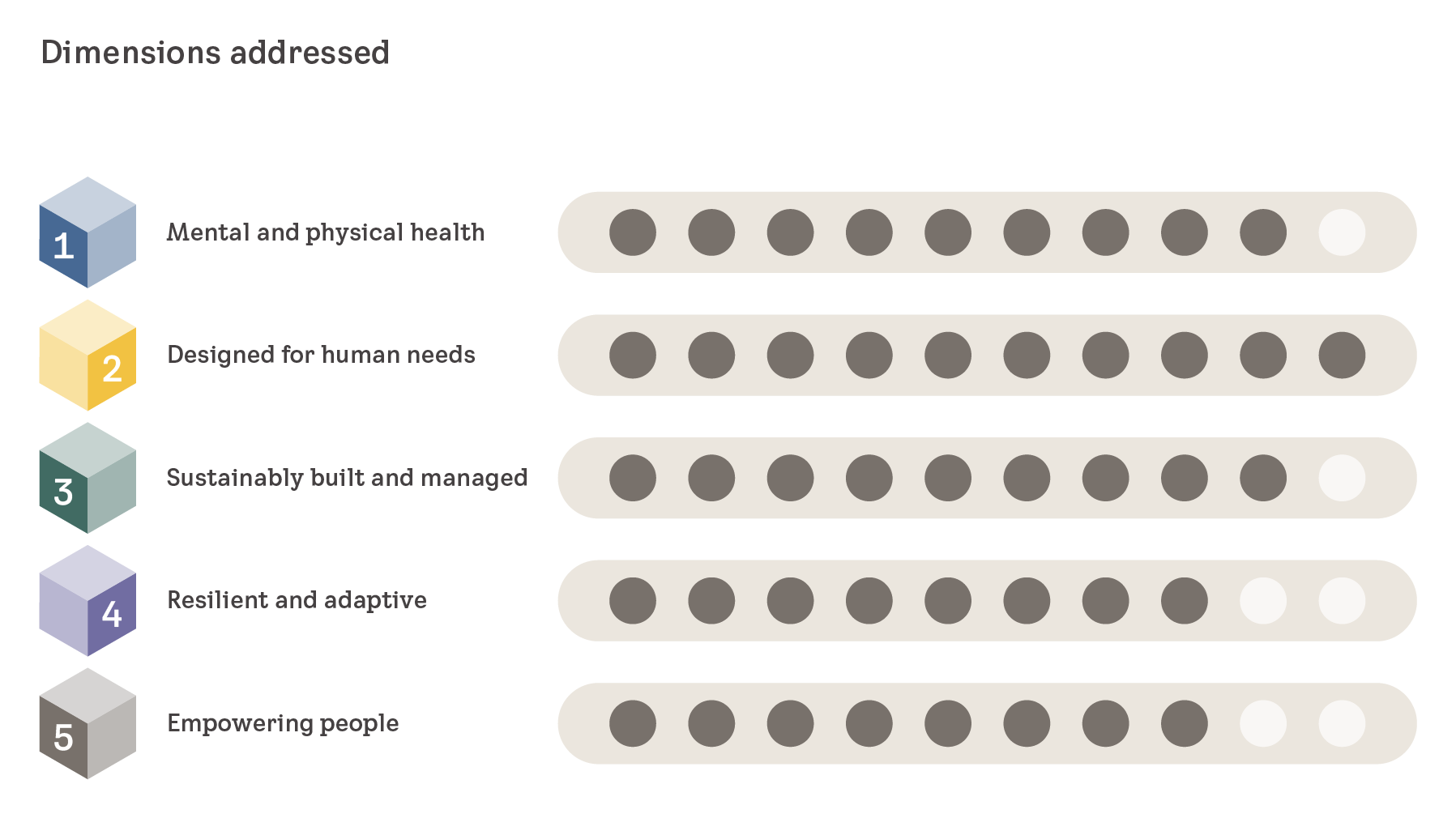
Type of building: Commercial building (office)
Year of construction: 2023
Location: Kvartetten, Sweden
Size: 16,000m2
Project lead: Wihlborg Architects
Healthy for people and planet
The Kvartetten office located close to Malmö is designed to be healthy for both people and the planet. The building has received four different certifications recognising its environmental and energy credentials.
The building is designed to withstand Sweden’s extremely cold winter temperatures and maintain a comfortable temperature in summer. This case is a good example of bio-climatic and biophilic, design principles.
Bio-climatic design principles work with natural energy systems, such as sun exposure, wind patterns, or rainfall, to create a building that matches the local climate. It also incorporates as many local, natural materials as possible. Biophilic design principles try to maximise our natural affinity towards nature. These design approaches lead to greater health and well-being of occupants and those around these buildings. They also increase air quality by using (largely untreated) bio-based materials, which leach fewer toxins.
Dimensions
In order to comprehensively assess the health of the building in this case study, various dimensions were evaluated, each measured through specific indicators relevant to their respective domains. The following figure presents the ratings for each dimension, providing a visual summary of the building's overall health status.

Data insights for Sweden
This office has integrated many natural elements in order to increase biodiversity and reap the positive effects of blue and green infrastructure on health and the environment. It uses two data sets linked to the Blue and green infrastructure indicator from the Resilient and adaptative dimension and Social connections from the Improving mental and physical health dimension.
Data on tree coverage across capitals in the EU is the closest match to blue and green infrastructure, it shows the lack of greenery across capital cities.
Greening cities
Data on tree coverage across capitals in the EU is the closest match to blue and green infrastructure, it shows the lack of greenery across capital cities.
People-centric design
Another important design consideration for the Kvartetten office was space to socialise and relax. As this is not directly measured, the indicator of perceived social support could be seen as a proxy indicator, providing a valid cause to collect more health-related data specifically for workplaces.


